| 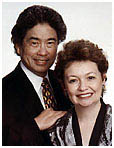 Effective
Teaching...
Effective
Teaching...
by Harry and Rosemary
Wong
September
2002
Dispensing
Materials in Fifteen Seconds
September paints a picture of classrooms teeming with materials and supplies. But, how do you go about accounting for those items during instructional time? We all know the value of engaging students in hands-on, minds-open activities, but the dispensing and collecting of materials for an activity can be a horrendous procedure. Here's how it can be done in fifteen seconds and with no pain or strain and without losing any items, either!
All effective teachers actively and physically immerse their students in the learning process. So it's urgent that materials, whether they are math manipulatives, physical education equipment, science supplies, fine arts materials, or even textbooks are dispensed as quickly as possible…in under a minute with a minimum of traffic congestion in the classroom.
Imagine taking 28 minutes for a high school teacher's class to exchange papers, as described in a research paper during classroom observation. Or, what about the teacher who "lost" materials at the end of every activity? Translated: The students walked off with the materials. Take an item as simple as a ruler. If two are taken from each period, that would be 12 or 14 gone by the end of the day. Are the students at fault? Perhaps we should look at the management system that invites things to be "misplaced."
Do Not Use a Central Table
The potential for disorganization and disaster is found when the teacher places all of the materials for an activity on a central table and announces, "All right, everything you need is on this table." So, all period long, a multitude of students are parading back and forth, getting one or two items as they are needed. There are even students who yell at their classmates who are at the central, supply table, "Get two rulers, not one!"
And, does the student who goes to get the item return via the same path or in the same length of time? We all know what happens. They stop and talk, and if they are seen with a ruler, they are challenged to a mock fencing match as they fend off a gauntlet of defenders who are guarding the length of the aisle. Then we have those "lethal weapons," like meter sticks, compasses, and batons. En garde!
To make matters more complex, in some classes liquids such as paints, chemicals, and water are used. During the same movement from the central table, these liquids are spilled, even flicked at other students, and the teacher who does not know what to do reverts to lectures, worksheets, and "quiet study time." And we all know that quiet time is a waste of productive time in the classroom.
Finally, we come to the worst scenario, which is at the end of the class period. The teacher announces, "All right everyone. The bell's going to ring in five minutes. Let's clean up." First, what does "clean up" mean to a group of second graders, or a pubescent seventh grader from a dysfunctional home, or a high schooler with no concept of "clean up your room?" And if the teacher is more specific and says, "Bring everything up to the (central) table," that's exactly what the students will do--drop everything on the table and exit quickly as the bell rings to end the class.
Now, the harried teacher can be seen sorting and rearranging things. Oh, no, two rulers are missing! The class is gone and the next class is beginning to enter. Angry? Please don't be. It's not the students; it's how the entire activity process was managed.
Place Everything at the Student Table
There are solutions to the dispensing and collecting of materials and here are three. Two are from past Gazette columns and the third one is a technique for this month's column.
In our November
2001 column (https://teachers.net/wong/NOV01),
Steve Geiman, a high school physical education teacher, said,
Before I made the changes in the gym, my classes were difficult. I was working myself to death reminding students every day of things I needed them to do. I did all of the work, setting up games, moving equipment, and handling paperwork. It was exhausting! I did not enjoy physical education, nor did the students.
The students are now responsible for all paper work, equipment, and set-up--leaders are assigned and activities are much more organized. Classes run themselves and I can teach much more effectively. Students can't wait to get to class!
In our December
2001 column (https://teachers.net/wong/DEC01/),
we talked about Jeannie Bayless, an art teacher in Las Vegas.
She not only must dispense and collect materials, she has to manage
a different class each hour over a two-week period, as each class
in the school cycles through her room. Yet, these students, despite
a two-week hiatus, know what to do when they enter her classroom.
She has all of the materials ready for them at their tables and as the students settle into their previously assigned tables, they immediately take an inventory and arrange the materials ready for work. If there is any classroom movement, the floors are marked with lanes or arrows so that if students need water or must wash their paint brushes, there is an organized flow of traffic without students bumping into each other.
Dispensing Materials in Fifteen Seconds
Here's the favorite system used for years in Harry's classroom with much success, and is readily applicable, in concept and practice, to any other classroom activity at all levels. It's called the TOTE TRAY SYSTEM, indicating that everything is preorganized in a carrying container and is carried or toted to the work area.
- Gather a collection of similar containers sufficient for the number of groups and the size of your class. Typically, this may mean 15 or more plastic boxes, coffee cans, shoeboxes, dishpans, copy machine paper boxes, and shopping bags.
- The number of groups will determine the number of tote trays needed. To determine how many groups will be organized, refer to The First Days of School, page 252 where the statement is made:
The number of people in a group must equal the number of jobs in the group.
So, if you have 30 students and there will be five students in each group, six tote trays will be prepared.
Collecting Everything in Minutes and With No Loss
The procedure for collecting the materials is even more important than the procedure for dispensing the materials, assuming you want everything returned.
The teacher is relaxed, stress-free, and happy knowing that an organized classroom is a class ready for productive learning.
A Peek Into the Future
Teaching is a doing profession; it is a sharing profession. We learn best by sharing, not by hoarding secrets or whining about why things can't be done. We learn best when we share with each other, which is what so many of you have done in our columns. As you go back and read about Steve Geiman who shares how he manages his physical education class, Sarah Jones and her second grade class, Liz Breaux and her alternative school classroom, Jeannie Bayless and her art class, and Pam Hawkins and her junior high school, know that these people willingly shared their information with us so that we could write each column and share in return.
In the months to come we will share with you the work of Max Longhurst and his work with substitute teachers, the classroom management techniques of a group of foreign language teachers in Virginia, and Becky Hughes, a high school band director with a class size of over 150 students.
We have spent much time on classroom management for without it teaching is virtually impossible. We are now going to start a series of columns on teaching for mastery. As you know when you read The First Days of School, the book is structured on the three characteristics of effective teachers: classroom management, lesson mastery, and positive expectations. At this time when accountability and high test scores are expected, we will share some information on how to teach lessons effectively.
Please continue to share your classroom management strategies with us. But if you have techniques for effectively teaching a lesson, please write to us. We'd love to hear from you and perhaps share the information in future columns.
Our profession is in a crisis mode. The demands of the classroom are increasingly intense and yet you persevere and want to make a difference in the classroom with your students. Our hats are off to you---we salute you---and welcome you to a brand new school year and what we hope will be a most gratifying year for you and your students. If you use the resources you have right here at Teachers.Net, we know you'll be around for years to come. And for your students, that's a plus---for each year you grow in skill and understanding of how to be a truly effective teacher.
 For a printable version of this article click
here.
For a printable version of this article click
here.
Harry & Rosemary Wong products: http://www.harrywong.com/product/
Email Harry Wong: harrywong@teachers.net
Gazette Articles by Harry & Rosemary Wong:
If you spot a link that appears to be out-of-date, please alert us at webmaster@teachers.net!
- A Grateful Goodbye After 15 Years (Jun 2015)
- Love, Marriage, and Babies, Oh My! (May 2015)
- Retention Rate Is 100 Percent (Apr 2015)
- Teacher Effectiveness and Human Capital (Mar 2015)
- Training Teachers to Be Effective (Feb 2015)
- Making Deals Is Ineffective (Dec 2014 / Jan 2015)
- Retrieving and Carrying Electronic Devices (Nov 2014)
- Sharing to Succeed (Oct 2014)
- How a University Prepares Its Students (Sep 2014)
- Effective Teaching (Aug 2014)
- Your Future Is in Your Hands (June/July 2014)
- The Classroom Management Book (May 2014)
- When Students Succeed; Teachers Succeed (April 2014)
- Teaching New Teachers How to Succeed (March 2014)
- Execute and Praise (February 2014)
- Shaping a Solid Foundation (Dec 2013 / Jan 2014)
- The Most Misunderstood Word (November 2013)
- How to Start Class Every Day (October 2013)
- Prevention: The Key to Solving Discipline Problems (September 2013)
- Planning, Planning, Planning (August 2013)
- Are You THE One? (June / July 2013)
- Practical Examples That Work (May 2013)
- A Disability Is Not a Handicap (Apr 2013)
- Totally Inexcusable (Mar 2013)
- Be Proud of Public Education (Feb 2013)
- Structure Will Motivate Students (Dec 2012 / Jan2013)
- Orchestrating the Classroom (Nov 2012)
- The Lasting Impact of Instructional Coaching (Oct 2012)
- Learning, Laughing, and Leaving a Legacy (Sep 2012)
- Twenty-two, First Year, and Legit (Aug 2012)
- A Master Teacher of Teachers (June/July 2012)
- Where Going to School Means Success (May 2012)
- A Nationally Celebrated High School (Apr 2012)
- The Highest Rated School in New York City, Part 2 (Mar 2012)
- The Highest Rated School in New York City, Part 1 (Feb 2012)
- The Importance of Culture (Dec 2011 / Jan 2012)
- You Can Teach Classroom Management (Nov 2011)
- Seamless, Transparent, and Consistent (Oct 2011)
- Coaching Teachers to Be Effective Instructors (Sep 2011)
- How a Principal Creates a Culture of Consistency (Aug 2011)
- Graduation Begins in Your Classroom (June/July 2011)
- The Inspiration of a Mother (May 2011)
- How to Be an Effective Leader (Apr 2011)
- Learning Objectives: The Heart of Every Lesson (Mar 2011)
- Even Shakespeare Had Structure (Feb 2011)
- Effectiveness Defined: It's Not a Mystery (Dec 2010 / Jan 2011)
- Surviving Without a Principal (Nov 2010)
- Achieving Greatness: Locke Elementary School, Part 2 (Oct 2010)
- Teaching Greatness: Locke Elementary School, Part 1 (Sep 2010)
- Effective from the Start (Aug 2010)
- Ten Year Summary of Articles, 2000 to 2010 (June/July 2010)
- The Success of a Culture of Consistency (May 2010)
- Training Teachers to Be Effective (Apr 2010)
- Learning to Teach, Teaching to Learn (Mar 2010)
- Turning Teaching Dreams into Reality (Feb 2010)
- Dreams and Wishes Can Come True (Dec 2009 / Jan 2010)
- Success in a State Controlled School (Nov 2009)
- Inner City Is Not An Excuse (Oct 2009)
- Exceeding All Expectations (Sep 2009)
- Teachers Are the Difference (Aug 2009)
- Nine Year Summary of Articles, 2000 to 2009 (Jun/Jul 2009)
- Teachers Are the Greatest Assets (May 2009)
- The Tools for Success (Apr 2009)
- Assessing for Student Learning (Mar 2009)
- To Be an Effective Teacher Simply Copy and Paste (Feb 2009)
- The Sounds of Students Learning and Performing (Dec 2008)
- A School That Achieves Greatness (Nov 2008)
- Boaz City Schools: Professional Learning Teams (Oct 2008)
- It Was Something Close to a Miracle (Sep 2008)
- A Computer Teacher Shows the Way (Aug 2008)
- Eight Year Summary of Articles, 2000 to 2008 (Jun/Jul 2008)
- An Amazing Kindergarten Teacher (May 2008)
- Schools That Beat the Academic Odds (Apr 2008)
- Academic Coaching Produces More Effective Teachers (Mar 2008)
- Coaches Are More Effective than Mentors (Feb 2008)
- Wrapping the Year with Rap! (Dec 2007/Jan 2008)
- The Floating Teacher (Nov 2007)
- Taking the Bite Out of Assessment—Using Scoring Guides (Oct 2007)
- Ten Timely Tools for Success on the First Days of School (Sep 2007)
- First Day of School Script - in Spanish, Too! (Aug 2007)
- Seven Year Summary of Articles, 2000 to 2007 (Jun 2007)
- Effective Teachers End the Year Successfully (May 2007)
- Training Gen Y Teachers for Maximum Effectiveness (Apr 2007)
- Classroom Management Applies to All Teachers (Mar 2007)
- Students Want a Sense of Direction (Feb 2007)
- Rubrics in Two College Classes (Dec 2006/Jan 2007)
- How to Write a Rubric (Nov 2006)
- Assessing Student Progress with a Rubric (Oct 2006)
- A 92 Percent Homework Turn-in Rate (Sep 2006)
- Effective Teachers Are Proactive (Aug 2006)
- Five Year Summary of Articles (Jun 2006)
- Hitting the Bulls Eye as a Beginning Teacher (May 2006)
- They're Eager to Do the Assignments (Apr 2006)
- The Success of Special Ed Teachers (Mar 2006)
- What Teachers Have Accomplished (Feb 2006)
- Fifty Years Ago, The Legacy (Dec 2005/Jan 2006)
- The Emergency Teacher (Nov 2005)
- Classroom Management Is Not Discipline (Oct 2005)
- A Successful First Day Is No Secret (Sep 2005)
- The Most Important Factor (Aug 2005)
- Four Year Summary of Articles (Jul 2005)
- Improving Student Achievement Is Very Simple (Part 2) (Jun 2005)
- Improving Student Achievement Is Very Simple (Part 1) (May 2005)
- Never Cease to Learn (Apr 2005)
- His Classroom Is a Real Life Office (Mar 2005)
- The Power of Procedures (Feb 2005)
- The First Ten Days of School (Jan 2005)
- PowerPoint Procedures (Nov/Dec 2004)
- The Saints of Education (Oct 2004)
- How Procedures Saved a Teacher's Life (Sep 2004)
- How to Help Students with Their Assignments (Aug 2004)
- Three Year Summary of Articles (Jun/Jul 2004)
- His Students are All Certified (May 2004)
- What to Do When They Complain (Apr 2004)
- A Well-Oiled Learning Machine (Mar 2004)
- The Effective Teacher Adapts (Feb 2004)
- How to Start a Lesson Plan (Aug 2003)
- Applying for a Teaching Job in a Tight Market - Part 2 (Jun/Jul 2003)
- Applying for a Teaching Job in a Tight Market (May 2003)
- The Effective Substitute Teacher (Apr 2003)
- A First Day of School Script (Mar 2003)
- How to Retain New Teachers (Feb 2003)
- No Problem With Hurricane Lili (Dec 2002)
- A Class Size of 500 (Nov 2002)
- Effective Practices Apply to All Teachers (Oct 2002)
- Dispensing Materials in Fifteen Seconds (Sept 2002)
- How To Start School Successfully (Aug 2002)
- Teaching Procedures Is Teaching Expectations (June - July 2002)
- $50,000 to Replace Each Teacher (May 2002)
- Even Superintendents Do It (Apr 2002)
- Impossible, No Job Openings? (Mar 2002)
- A Stress Free Teacher (Feb 2002)
- A Most Effective School (Jan 2002)
- Van Gogh in Nine Hours (Dec 2001)
- The Effective Teacher Thinks (Nov 2001)
- How a Good University Can Help You (Sep 2001)
- How to Motivate Your Students (May 2001)
- How to Recognize Where You Want to Be (Apr 2001)
- What Successful New Teachers Are Taught (Mar 2001)
- A Journey of the Heart (Feb 2001)
- The Miracle of Teachers (Jan 2001)
- It's Not the Students. It's the Teacher. (Dec 2000)
- The First Five Minutes Are Critical (Nov 2000)
- How to Start a Class Effectively (Oct 2000)
- The Problem Is Not Discipline (Sep 2000)
- There Is Only One First Day of School (Aug 2000)
- Applying for Your First Job (Jul 2000)
- Your First Day (Jun 2000)
Browse through the latest posts from the Classroom Management
Chatboard...
|




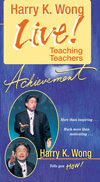
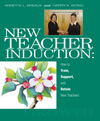
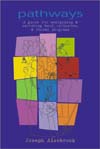


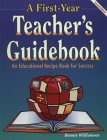
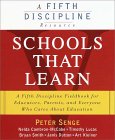

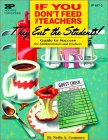
 Effective
Teaching...
Effective
Teaching...